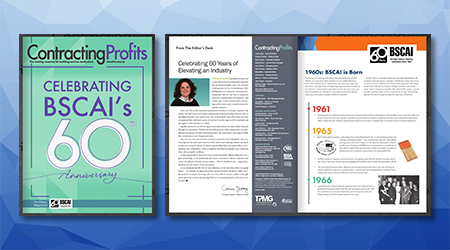
A recently released White Paper was created to help jan/san distributors increase efficiencies and reduce spending. Specifically, the paper outlines the benefits of repairing instead of replacing key equipment used to transport goods around a warehouse, as well as the receiving and storing of inventory, picking and packing of goods, shipping of orders, and handling of returns at fulfilment centers.
The paper was created by Southgate Global, an international company that specializes in helping warehouses and fulfilment centers cut costs and reduce their carbon footprints. The report outlines that major shifts in power, significant overhaul of economic policies, and global conflicts so far in 2025 have influenced the international supply chain, leading to increased costs, delays and even shortages of certain goods and raw materials. As a result, organizations are looking for ways to streamline operations to best mitigate these impacts and keep goods flowing.
Maintaining operational efficiency in both the warehouse and in distribution centers now plays a crucial role in business profitability. However, rapid SKU (Stock-Keeping Unit) turnover and seasonal volume surges mean damaged carts, cages or trolleys can quickly bottleneck operations, leading to unexpected downtime and slowed operations.
Recognizing this, Southgate Global's latest White Paper is helping organizations understand when to repair instead of replace damaged equipment, and the importance of regular servicing in pre-empting equipment failure.
This paper sets out the seven key benefits of repairing equipment, a checklist process for organizations to use, and provides a calculator to enable businesses to work out when repairing is the most cost-effective option over replacement.
John Maher, head of fulfilment servicing at Southgate Global, explains:
"Carts and trolleys, indeed any manual handling equipment, are integral to every warehouse operation, no matter the sector. But they're often perceived as low value and, as a result, are frequently replaced at the first sign of wear.
"There is a danger when taking this approach. Often, the financial cumulative cost of replacements is not factored in. For example, replacing equipment incurs not only the capital cost of new assets but also additional expenses related to transportation, downtime and integration. Repairing damaged trolleys, either brakes, wheels or general servicing, is far more cost-effective than purchasing a whole new unit."
But Southgate recognizes that there are times when replacement may be the more economical choice long term. Equipment can deteriorate to such a point where ongoing repairs can only provide a temporary solution, leading to mounting maintenance costs. Alongside this, older equipment often might run less efficiently, making a more energy-efficient replacement the better option long term.
In response to this, the publication contains a checklist of factors to consider such as cost, the lifecycle stage of the equipment, the wider impact on overall operations and speed when deciding to repair or replace. It has also produced an industry-first equation which provides a structured approach to weighing the costs and benefits of repair versus replacement.
To learn more and download the white paper, click here.

 Celebrating BSCAI's 60th Anniversary eBook
Celebrating BSCAI's 60th Anniversary eBook The Down and Dirty on Cleaning in Virus Season
The Down and Dirty on Cleaning in Virus Season How Surfactant Use is Expanding in Commercial Cleaning
How Surfactant Use is Expanding in Commercial Cleaning